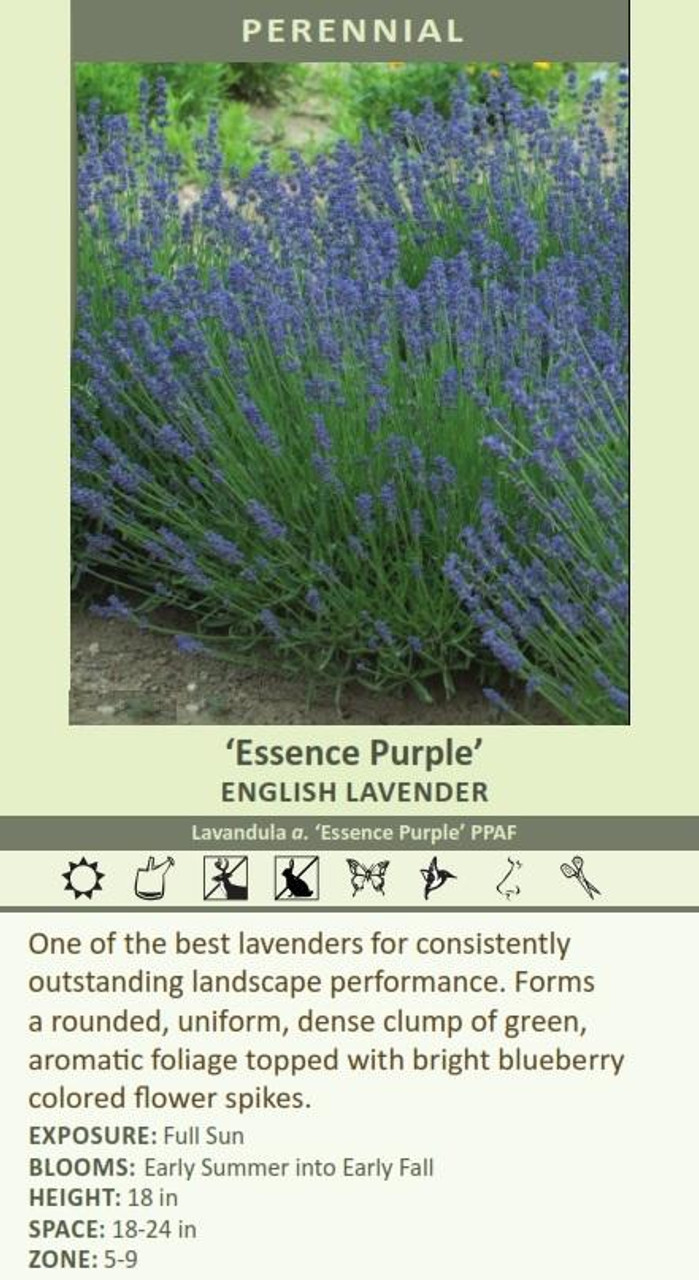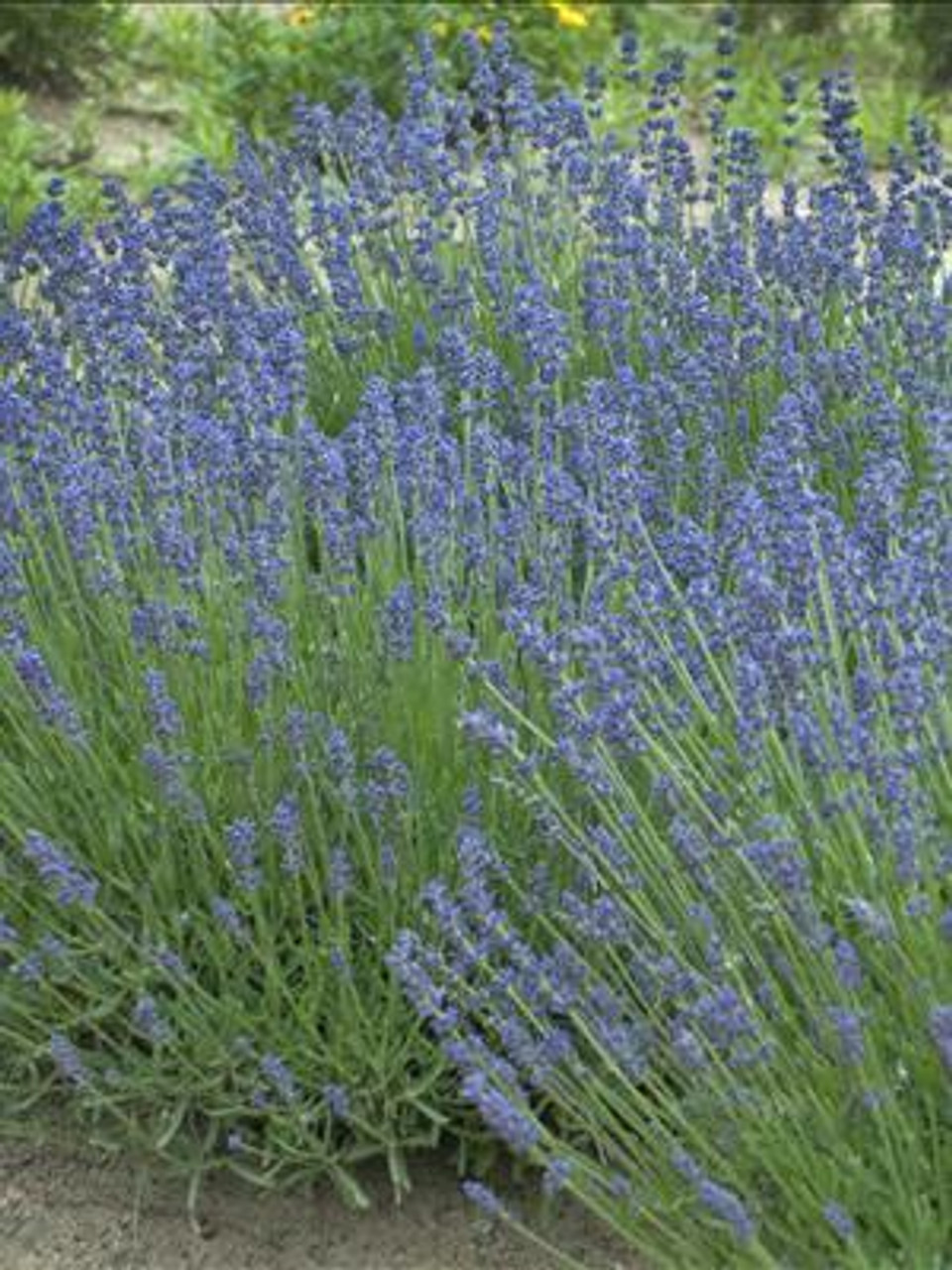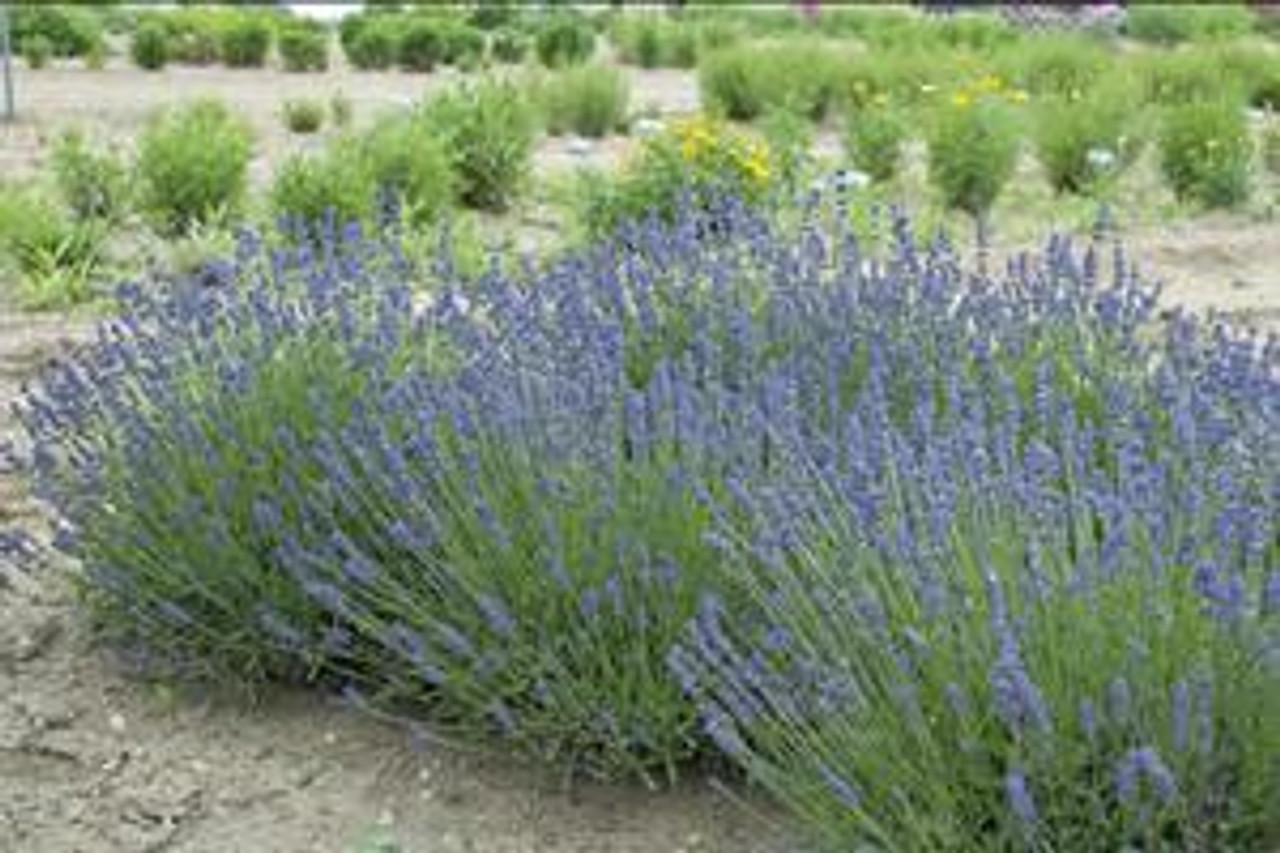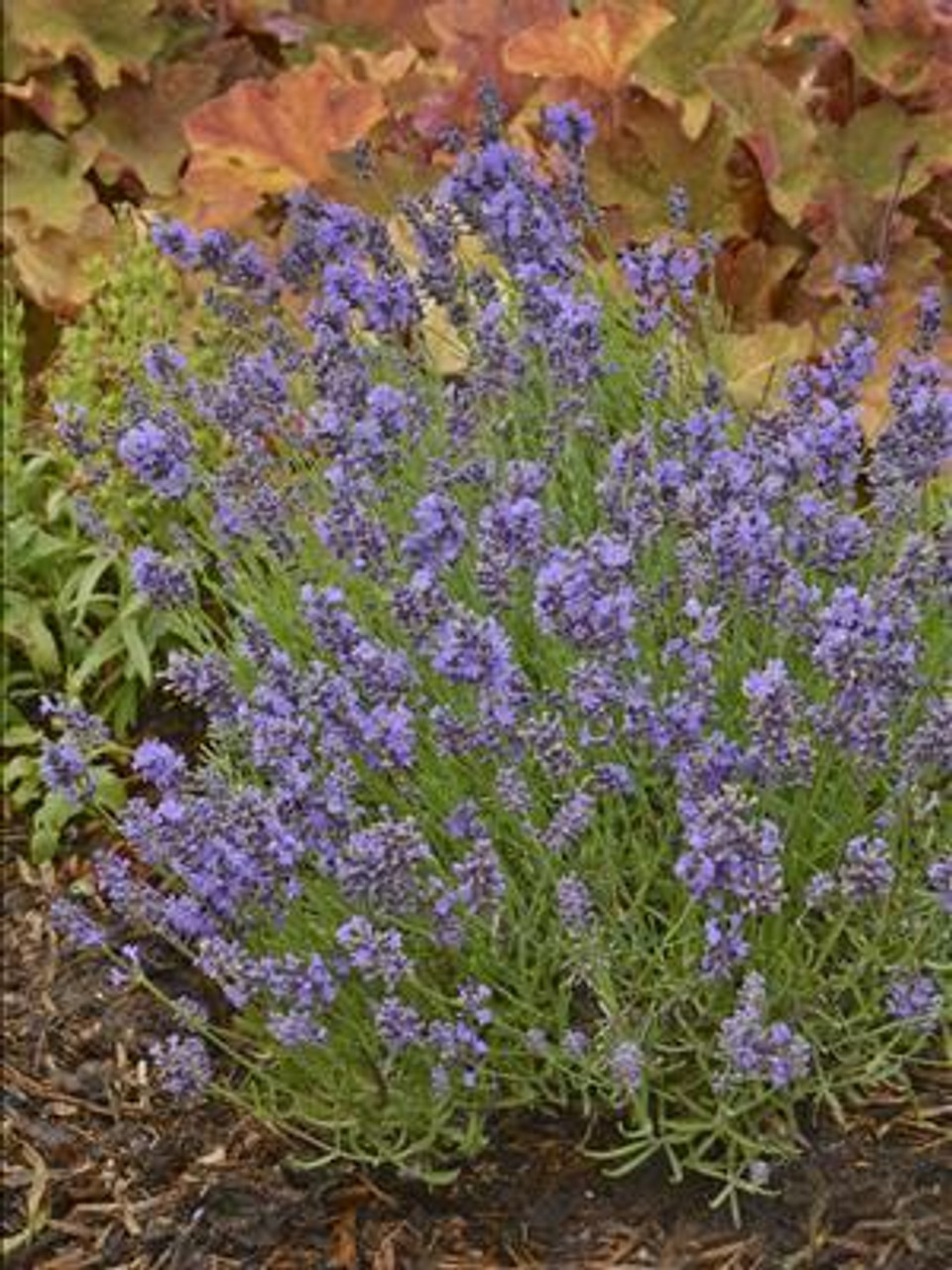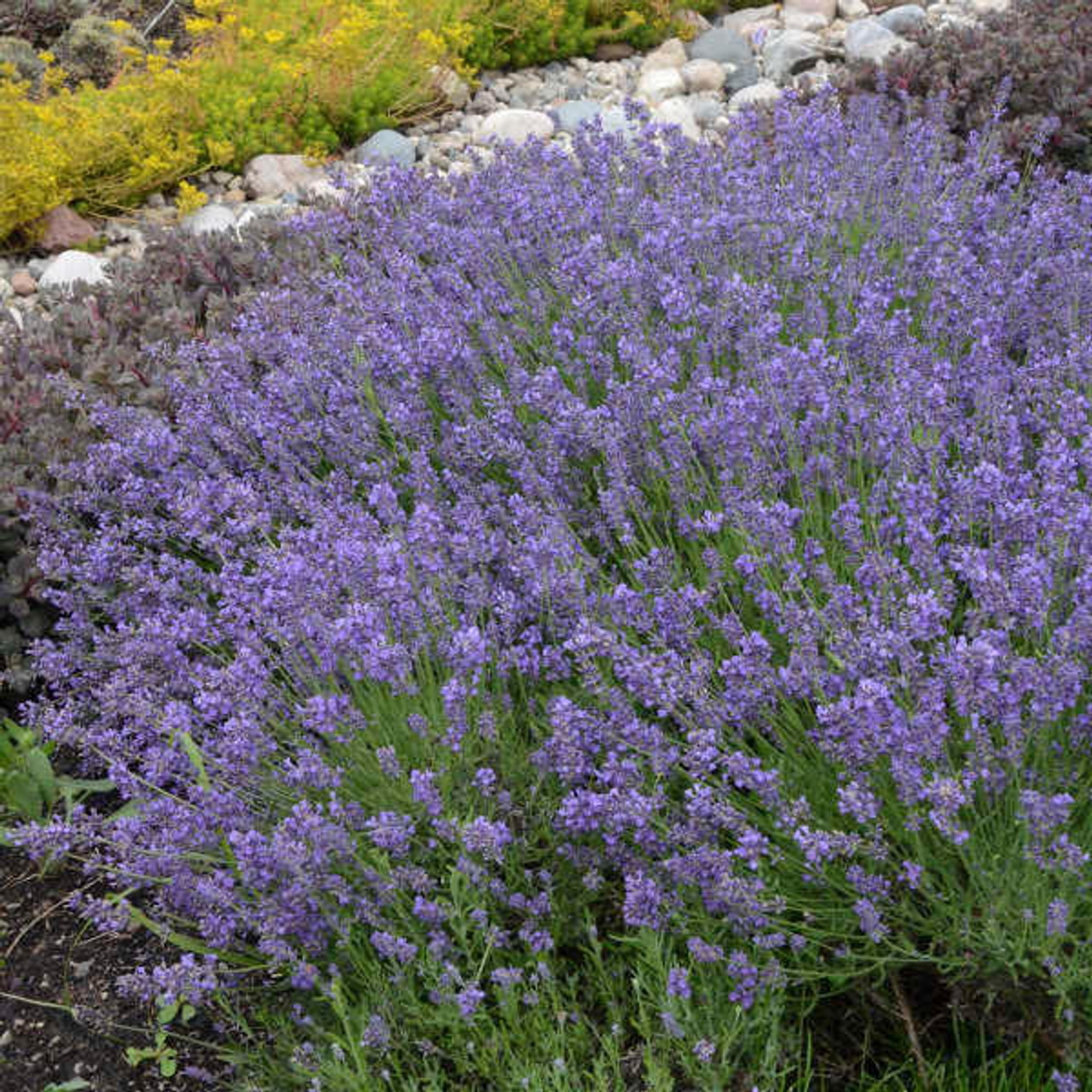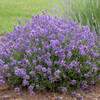Product Description
Lavandula a. 'Essence Purple' (25) Bare Root Plants
Common Name: English Lavender
In our trials here at Walters Gardens, we have been trialing a lot of varieties of Lavender because it meets the needs of today’s home gardeners: it is long blooming, deer and rabbit resistant, drought tolerant, and very easy to grow.
‘Essence Purple’ forms a perfect rounded ball-shaped, uniform, dense clump of green, aromatic foliage. In our trials, the plants retained their shape all season without opening up or discoloring.
It starts to bloom about 10 days earlier than standard Lavenders such as ‘Hidcote’, producing a profusion of bright blueberry colored flower spikes for many weeks. The stems are just the right length for cutting for fresh or dried bouquets.
In our trials here at Walters Gardens, we have been trialing a lot of varieties of Lavender because it meets the needs of today’s home gardeners: it is long blooming, deer and rabbit resistant, drought tolerant, and very easy to grow.
Lavender has been grown for centuries for its intensely fragrant flowers and beautiful appearance. It is a staple item of every sunny garden, and its dried flowers are widely used in potpourris and arrangements.
Lavender must be grown in full sun to be able to produce flowers, so do not hesitate to plant them in those hot, dry areas where nothing else seems to grow. They will actually grow better in poor, gravelly soil than in rich humus; don't be tempted to enrich the soil when you plant it. Sharp drainage, especially in winter, is essential for preventing crown rot. Other than that, Lavender is known to have few problems with pests and diseases. Shearing back the evergreen foliage in early spring will rejuvenate plants and stimulate new growth.
Height: 18.0 Inches
Spread: 18 - 24 Inches
Hardiness Zones: 5,6,7,8,9
Flower Color: Purple-blue shades
Foliage Color: Green shades
Full Sun (> 6 hrs. Direct Sun)
Low Water Needs
Poor Soil Quality
Bloomtime: Early Summer - Early Fall
Attracts Butterflies
Bee Friendly
Deer and Rabbit Resistant
Seasonal Interest: Dried Seed Heads
Evergreen
Border Plant, Container, Cut Flower, Cut Foliage, Dried Flower, Drought Tolerant, Edging, Fragrant Flowers, Fragrant, Foliage, Mass Planting, Small
Lavandula angustifolia 'Essence Purple', commonly known as Essence Purple Lavender or English Lavender, is a popular variety of lavender prized for its beauty, fragrance, and versatility. This compact, evergreen shrub boasts vibrant purple-blue flowers and a delightful scent that can enhance any garden.
- Characteristics Essence Purple Lavender is a compact and tidy plant with a rounded, shrub-like habit. It typically reaches a height of 18-24 inches and spreads to a similar width. The plant features dense clumps of fragrant, gray-green foliage and produces an abundance of lavender-blue flowers on sturdy stems. The flowers are 4-5 cm in size. It is one of the first English lavenders to bloom, typically starting in early summer, about 10 days earlier than other English lavender varieties. The flowers continue to bloom into early fall. The sturdy stems make the flowers excellent for cutting. While it may be called English lavender (Lavandula angustifolia), the cultivar 'Essence Purple' was developed by Walters Gardens in the US.
- Growing Conditions Essence Purple Lavender thrives in full sun and well-drained soil. It prefers dry to average moisture levels and is drought-tolerant once established. It is not particular about soil type but prefers alkaline soils and is salt tolerant. This lavender variety is hardy in USDA zones 5-9 and can tolerate a wide range of temperatures. In areas of high humidity, ensure the soil has good drainage and air circulation to prevent root rot. Excess winter moisture may cause the stem to rot, and hot, humid summers may cause the leaves to blacken and the plant to deteriorate. It is also deer and rabbit resistant, making it a low-maintenance option for gardeners.
- Bloom Time Essence Purple Lavender is one of the first English lavenders to bloom, typically starting in early summer and continuing into early fall. The flowers last for several weeks and provide a beautiful display of color and fragrance.
- Uses Essence Purple Lavender is a versatile plant with various uses in the garden and beyond. Its compact size and attractive form make it ideal for borders, rock gardens, and containers. It can also be used as a low hedge. Its compact size and tolerance to pruning make it an excellent choice for low hedges, adding a fragrant and colorful border to pathways or garden beds. Mass planting can create a stunning visual impact. Imagine a swathe of vibrant purple-blue flowers swaying gently in the breeze, their fragrance filling the air. The fragrant flowers are excellent for cutting and can be used in fresh or dried arrangements. Lavender is also known for its calming properties and is often used in aromatherapy and as a natural insect repellent.
- Pruning and Maintenance To encourage more blooms and maintain the plant's shape, prune flower stalks after flowering. In the spring, prune plants to the desired size or back to the old woody stems to promote vigorous growth and keep a dense, compact habit. When pruning, remember that lavenders should never be pruned harder than halfway down the stems. Remove faded flowers to promote continued bloom. Prune once or twice a year to keep the plant shapely.
Companion Plants Many plants complement Essence Purple Lavender in the garden. Some suitable companion plants include:
- Roses: Roses and lavender share similar growing requirements and create a classic and romantic pairing.
- Salvia: Salvia provides a contrasting color and texture to lavender while attracting pollinators.
- Coneflower: Coneflowers add a vibrant touch to the garden and bloom around the same time as lavender.
- Sedum: Sedum offers late-season interest with its succulent foliage and late-summer blooms.
- Ornamental Grasses: Ornamental grasses provide movement and texture to the garden, complementing the lavender's form.
Lavandula angustifolia 'Essence Purple' is an excellent choice for gardeners of all levels. Its compact habit, early bloom time, long-lasting flowers, and vibrant color make it a standout plant. It thrives in sunny locations with well-drained soil and is both deer and rabbit resistant. This low-maintenance lavender variety is perfect for adding fragrance and color to borders, rock gardens, containers, and even as a low hedge. With its versatility and ease of care, Essence Purple Lavender is sure to be a favorite in any garden.
Other Details
The most important part of the plant is its root system. Healthy roots are the foundation of a healthy, vibrant plant. The type of plug container used is based on the specific needs of the plants. Perennials offered as bare root traditionally perform better when planted as bare root.Planted in a specialized mix, potted plants have well established root systems. Top growth stage will vary depending on the current life cycle and time of year when shipped. In Winter and early Spring dormant plants may be shipped. Dormant plants may be planted right away, even before the last frost date.
Most bare root varieties are field grown for at least one season, though Hemerocallis and Hosta are grown for two seasons. The bulk of the soil is removed during the harvesting process and the tops of most varieties are trimmed back to the crown. They are graded, packed in shredded aspen or sphagnum moss and stored in freezers until ready to be shipped.
See our Container Sizes and Bare Root Perennials pages for more information.
Plant information and care is provided in the Overview section, Plant Genus Page and general information is provided in the Planting Care & Guides. Additional questions can be asked on each Plant page.
Plant Spacing: Using the maximum mature spread or width of a plant to guide spacing, ensures space to grow to full size. To fill an area sooner, plant them closer together. Just remember, future thinning or transplanting may be needed.
Water: Keep a close eye on newly planted perennials, especially throughout the first growing year. Most early plant loss is due to too much or too little water!

